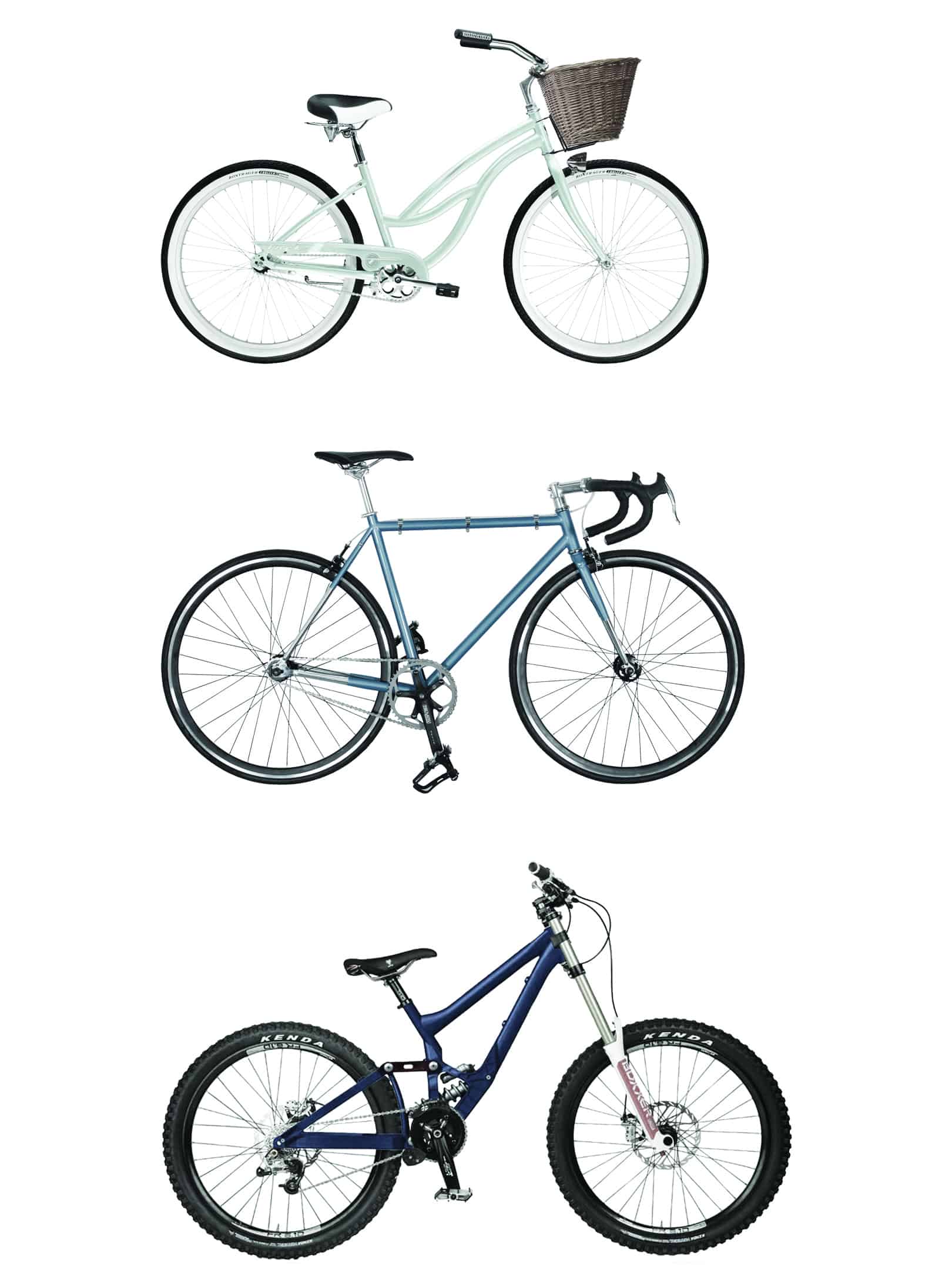Consider becoming a bicycle commuter — it’s cheap; helps you stay in shape; and is easy in a city like Toronto, especially around campus. So long as you keep some crucial information in mind, the biker’s way of life can really pay off.
THE GEAR
Timeless student ride:
The Beater
Your most economical commuting option will be to pick up a cheap bike (a beater). Checking out Craigslist or Kijiji will give you many options starting around $100. Bike Pirates is a non-profit organization that sells cheaper bikes and is definitely worth checking out.
New Bikes
For the higher-end cyclist, The Mountain Equipment Co-op has very high-value equipment. Many bike shops around U of T will also be happy to send you off with a beautiful new bike. Just make doubly sure you hear your lock click if that’s the route you take.
Rent your ride
BIXI rentals are a real hot topic in Toronto. Their many locations across downtown make biking on a whim easy, and there’s no maintenance on your part. A mere $5 gets you as many 30 minute trips as you can handle over a 24 hour period, perfect for a whip down to the Eaton Centre or Harbourfront and back. Keep in mind, a $250 deposit on your credit card is required. 72 hour periods and annual memberships are also available.
Security maturity
Make sure you’re doing your best to protect your bike. U-locks are preferable to cable locks; they generally cannot be broken using bolt cutters. Kryptonite offers $2,000 in insurance should someone manage to get through their products, but the thief will have to be gracious enough to leave behind part of the broken lock.
Remember that bike thieves can steal individual parts of the bike and not just the whole thing. Locking a wheel as well as your frame when securing your bike can help prevent this type of theft. Some cyclists also opt for two locks, the second for locking the back wheel or seat.
Tune it up!
Treating your bike to an annual tune-up will help to ensure a comfortable and safe ride. Hire a mechanic or do it yourself! Bike Chain is a U of T service offering all of the tools and expertise you need to help you tune up your own bike on the cheap. Using the service is free; you’ll only have to pay for any new parts you use.
Accessorize
Adding a basket can help you to use your bike for picking up groceries; fenders are a must to avoid kicking water all over your back if you plan on riding over puddles. For any fashionistas out there, cycle chic is always in season, and picking up a beautiful helmet helps to keep you safe while still looking good on the road.
LOGISTICS
Map your route
Google Maps biking directions is a must for anyone trying to sort out the best bike route from A to B. By giving preference to trails, parks, and bike lanes, you’ll be riding along some of the best routes around the city. A smartphone with GPS can also come in mighty handy if you ever get lost on some of those longer treks.
Using your bike with the TTC
Consider getting a little help with your commute. The TTC plans to equip every bus with bike racks by the end of 2012. Many routes already have them, and bringing your bike on to any TTC vehicle is allowed outside of peak hours (peak hours are weekdays, from 6:30 a.m. to 10 a.m. and 3:30 p.m. to 7 p.m.).
THE RIDE
Know your rights!
Remember that you can legally ride in the main lane alongside other cars, which can be especially important in poor weather conditions (snow banks tend to invade bike lanes). If you need to take a left turn on a busy intersection, get right in there while performing the proper hand-turn signal. It’s easy to feel vulnerable, but just remember, cars must legally treat you as a vehicle.
Be considerate
A cop seeing you go through a red light could throw the book at you for $325. $110 could be on the line for cycling in the wrong direction on a one-way street. Riding on the sidewalk is also an offence. While cyclists don’t get fines all that often, you’ll still frustrate a bunch of drivers and pedestrians if you’re riding selfishly.
Be safe on the road
Always be aware of your surroundings. You’ll want to use your eyes and ears to gather as much information as you can, since cars can sometimes forget about your existence, requiring you to act fast. It’s also important to make your presence known by using reflectors, lights, and your bell. Wear a helmet when possible.


